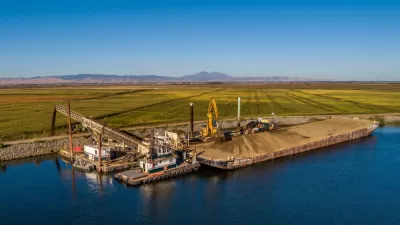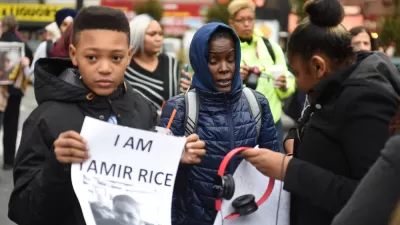Being a person of color in the United States means being physically vulnerable to both environmental hazards and police violence, two professors argue.
UC Davis professors are exploring the connections between police killings of black Americans and toxic environmental conditions. In a forthcoming article, they argue that "place and environment matters when discussing police violence," reports Brentin Mock in CityLab.
Environmental hazards are overly concentrated in communities of color, where police violence has also been persistently protested.
The authors propose understanding U.S. racism as "an embodied experience of structural, environmental insecurity." Professor Lindsey Dillon adds:
"Toxic exposure is also a form of slow violence and slow death… For many people, the lived experience of police violence and toxic exposure—these different forms of physical vulnerability both live together. We have to think of them together instead of thinking of them separately."
Mock offers context in anticipation of the article, touching on the police killings of Freddie Gray in Baltimore (where he, like Korryn Gaines, struggled with lead poisoning) and Eric Garner in New York (who suffered from asthma, a condition whose distribution is racialized across New York and the U.S.), among others.
FULL STORY: How Environmental Injustice Connects to Police Violence

Planetizen Federal Action Tracker
A weekly monitor of how Trump’s orders and actions are impacting planners and planning in America.

San Francisco's School District Spent $105M To Build Affordable Housing for Teachers — And That's Just the Beginning
SFUSD joins a growing list of school districts using their land holdings to address housing affordability challenges faced by their own employees.

The Tiny, Adorable $7,000 Car Turning Japan Onto EVs
The single seat Mibot charges from a regular plug as quickly as an iPad, and is about half the price of an average EV.

Seattle's Plan for Adopting Driverless Cars
Equity, safety, accessibility and affordability are front of mind as the city prepares for robotaxis and other autonomous vehicles.

As Trump Phases Out FEMA, Is It Time to Flee the Floodplains?
With less federal funding available for disaster relief efforts, the need to relocate at-risk communities is more urgent than ever.

With Protected Lanes, 460% More People Commute by Bike
For those needing more ammo, more data proving what we already knew is here.
Urban Design for Planners 1: Software Tools
This six-course series explores essential urban design concepts using open source software and equips planners with the tools they need to participate fully in the urban design process.
Planning for Universal Design
Learn the tools for implementing Universal Design in planning regulations.
Smith Gee Studio
City of Charlotte
City of Camden Redevelopment Agency
City of Astoria
Transportation Research & Education Center (TREC) at Portland State University
US High Speed Rail Association
City of Camden Redevelopment Agency
Municipality of Princeton (NJ)





























